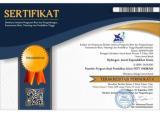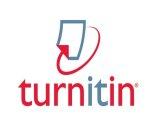Students’ Learning Engagement in the Topic of Atomic Concepts and the Periodic Table
DOI:
https://doi.org/10.33394/hjkk.v13i4.16944Keywords:
Behavior, Coginitive, Emotinal, Learning EngagementAbstract
Learning engagement constitutes a critical component in the educational process, significantly influencing both the effectiveness of instruction and student academic achievement. This study aims to analyze the learning engagement of undergraduate students enrolled in a Chemistry Education program, specifically concerning their engagement with the subject matter of atomic concepts and the periodic system within the context of a general chemistry course. This research adopts a qualitative descriptive approach. Data were obtained through classroom observations, semi-structured interviews, and document analysis. Observational data were collected from a cohort of 31 students participating in lecture sessions. Based on the initial observational findings, 15 students were purposively selected for in-depth interviews, representing three distinct engagement profiles: highly engaged, moderately engaged, and minimally engaged. The results indicate that students' behavioral, emotional, and cognitive engagement levels vary across categories. Behavioral engagement was predominantly classified as "high," with students demonstrating active participation in learning activities. Emotional engagement was categorized as "moderate," reflecting students’ interest in the subject matter, albeit with varying degrees of emotional involvement. Cognitive engagement was also categorized as "moderate," as most students exhibited cognitive involvement in line with the key indicators, although not consistently at an optimal level. In conclusion, while students generally demonstrated positive behavioral engagement, there remains room for improvement in fostering deeper emotional and cognitive engagement in learning about atomic concepts and the periodic system. These findings underscore the need for instructional strategies that holistically support all dimensions of student engagement to enhance learning outcomes in chemistry education.
References
Anugraheni, I. (2020). Analisis Kesulitan Mahasiswa dalam Menumbuhkan Berpikir Kritis Melalui Pemecahan Masalah. Jurnal Cendekia : Jurnal Pendidikan Matematika, 4(1), 261–267. https://doi.org/10.31004/cendekia.v4i1.197
Ardyansyah, A., Rahayu*, S., Munzil, M., Yahmin, Y., & Alsulami, N. M. (2025). Developing an Instrument to Assess Chemical Literacy for Prospective Chemistry Teachers. Jurnal Pendidikan Sains Indonesia, 13(1), 36–52. https://doi.org/10.24815/jpsi.v13i1.42095
Bogdan, R., & Biklen, S. K. (1997). (n.d.). Qualitative research for education (Vol. 368).
Cahyani, M. R., Erlina, E., Lestari, I., Masriani, M., & Ulfah, M. (2024). Measuring meaningful learning through the experience of chemistry education students’ in the basics of analytical chemistry practicum. Jurnal Pendidikan Kimia, 16(2), 168–175. https://doi.org/10.24114/jpkim.v16i2.57849
El-Mansy, S. Y., Barbera, J., & Hartig, A. J. (2021). Investigating small-group cognitive engagement in general chemistry learning activities using qualitative content analysis and the ICAP framework. Chemistry Education Research and Practice, 23(2), 335–347. https://doi.org/10.1039/d1rp00276g
Fitri, N. R., Rusdi, M., & Effendi-Hasibuan, M. H. (2022). The effect of argumentation-oriented learning models, inquiry-based learning models and science process skills on students’ argumentation ability in chemistry. Jurnal Pendidikan Kimia, 14(3), 180–186. https://doi.org/10.24114/jpkim.v14i3.39788
Gu, J., Tang, L., Liu, X., & Xu, J. (2022). Promoting Pre-service Teacher Students’ Learning Engagement: Design-Based Research in a Flipped Classroom. Frontiers in Psychology, 13. https://doi.org/10.3389/fpsyg.2022.810275
Habibati,Hanum, L., & Ahmad, N. J. (2025). Students ’ Understanding of the Concept in Reaction Rate by Using Diagnostic Test. 13(1), 254–273.
Haris, M., Muntari, M., & Loka, I. N. (2019). Penerapan Pembelajaran Kooperatif Terpadu NHT dan TSTS Dalam Mengatasi Kesulitan Belajar Struktur Atom dan Sistem Periodik Unsur. Jurnal Pijar Mipa, 14(3). https://doi.org/10.29303/jpm.v14i3.1230
Hartika, N., & Mariana, F. (2019). Pengaruh Keaktifan Belajar & Kecerdasan Emosional Terhadap Prestasi Belajar Mahasiswa. Progress: Jurnal Pendidikan, Akuntansi Dan Keuangan, 2(1), 57–71. https://doi.org/10.47080/progress.v2i1.490
Hasanah, S. M., Rahayu, S., Sulistina, O., & Alsulami, N. M. (2025). Membuat dan Memvalidasi Instrumen Literasi Kimia Konteks Keberlanjutan yang Selaras : Konstruksi dan Rasch Analisis Pengukuran Perkenalan. 13(2), 408–425.
Izasatifa, B. (2023). (n.d.). Pengembangan Panduan Praktikum Kimia Dasar Pada Prodi Pendidikan Kimia FTK UIN Ar-Raniry (Doctoral dissertation, UIN Ar-Raniry Fakultas Tarbiyah dan Keguruan).
Mariyana, M., Syahri, W., & Haryanto, H. (2023). Based E-LKPD development based problem based learning to improve students’ creative thinking skills on acid-base material. Jurnal Pendidikan Kimia, 15(2), 163–169. https://doi.org/10.24114/jpkim.v15i2.48264
Miles, M. B., & Huberman, A. M. (1994). An Expanded Sourcebook: Qualitative Data Analysis, Sage, Thousands Oaks, CA. In SAGE publication international education and professional publisher: Vol. second edi.
Naibert, N., Vaughan, E. B., Brevick, K., & Barbera, J. (2022). Exploring Student Perceptions of Behavioral, Cognitive, and Emotional Engagement at the Activity Level in General Chemistry. Journal of Chemical Education, 99(3), 1358–1367. https://doi.org/10.1021/acs.jchemed.1c01051
Patmisari, Setyawati, S., Muthali’in, A., & Prasetiyo, W. H. (2021). Student Engagement In Civic Learning: A Study For Practice. PINUS: Jurnal Penelitian Inovasi Pembelajaran, 6(2), 29–43. https://doi.org/10.29407/pn.v6i2.14949
Pramudibyanto, H. (2024). Analisis Perilaku Mahasiswa dalam Menemukan Literatur Rujukan Materi Diskusi Tutorial Online. Pustaka : Jurnal Ilmu-Ilmu Budaya, 24(1), 104. https://doi.org/10.24843/pjiib.2024.v24.i01.p14
Pratiwi, J., Rasmawan*, R., Erlina, E., Enawaty, E., & Ulfah, M. (2023). Profile of Critical Thinking Skills of Chemistry Education Students in Solving Problems Related to the Concept of Mole. Jurnal Pendidikan Sains Indonesia, 11(3), 559–573. https://doi.org/10.24815/jpsi.v11i3.30372
Putri, I., Nurfajriyani, I., & Fadilatussaniatun, Q. (2020). Pengaruh Suhu Ruangan Kelas Terhadap Konsentrasi Belajar Mahasiswa Pendidikan Biologi Semester Vii (B). BIO EDUCATIO : (The Journal of Science and Biology Education), 5(1), 11–15. https://doi.org/10.31949/be.v5i1.1744
Rosid, M. (2019). Analisis Ketrampilan Berpikir Kreatif Dan Aktivitas Belajar Siswa Dalam Pembelajaran Kimia: Bahan Kimia Dalam Kehidupan Sehari-Hari Menggunakan Model Project Based Learning. Jurnal Pembelajaran Fisika, 8(3), 195–201.
Sa’adah, U., & Ariati, J. (2020). Hubungan Antara Student Engagement (Keterlibatan Siswa) Dengan Prestasi Akademik Mata Pelajaran Matematika Pada Siswa Kelas Xi Sma Negeri 9 Semarang. Jurnal EMPATI, 7(1). https://doi.org/10.14710/empati.2018.20148
Sari, I. A., Haryanto, H., & Yusnaidar, Y. (2022). The effect of the application of the think talk write model and self-efficacy on students’ critical thinking ability in the material reaction rate in SMA Adhyaksa 1 Jambi city. Jurnal Pendidikan Kimia, 14(3), 166–173. https://doi.org/10.24114/jpkim.v14i3.39405
Sudipa, I. G. I., Cakranegara, P. A., Ningtyas, M. W. A., Efendi, E., & Wahidin, A. J. (2022). Penilaian Aspek Keaktifan Belajar Mahasiswa Menggunakan Metode ORESTE. Remik, 6(3), 436–447. https://doi.org/10.33395/remik.v6i3.11628
Sugiyono. (2018). Metode Penelitian Kuantitatif, Kualitatig, dan R&D.
Sunday, O. N. (2013). Relationships between students ’ task engagement and learning outcomes in chemistry. Sciencewebpublishing.Net, 1(August), 1–8. http://sciencewebpublishing.net/jerr/archive/2013/August/pdf/Sunday.pdf
Terrion, J. L., & Aceti, V. (2012). Perceptions of the effects of clicker technology on student learning and engagement: A study of freshmen Chemistry students. Research in Learning Technology, 20(2), 1–11. https://doi.org/10.3402/rlt.v20i0.16150
Tim H.H. van Dulmen, Talitha C. Visser, B. P. & S. M. (n.d.). Teacher and student engagement when using learning materials based on the context of cutting edge chemistry research.
Wijaya, T. (2018). M. K. J. E. K. J. P. I. (2018). Manajemen Kualitas Jasa.
Yuliyani, R., Alamsyah, N., & Awaludin, A. A. R. (2017). Pengaruh Minat dan Kebiasaan Belajar terhadap Prestasi Belajar Statistika Lanjut Mahasiswa. Jurnal Penelitian Pendidikan Matematika, 1, 86–93.
Zakky. (2020). Pengertian Pembelajaran Menurut Para Ahli dan Secara Umum [Lengkap]. In Zona Referensi llmu Pengetahuan Umum.
Zanira, D., & Cahyadi, S. (2021). Adaptation of School Engagement Measurement-MacArthur (SEM) Indonesian Version in the Context of Distance Learning. GUIDENA: Jurnal Ilmu Pendidikan, Psikologi, Bimbingan Dan Konseling, 11(2).
Published
How to Cite
Issue
Section
Citation Check
License
License and Publishing Agreement
In submitting the manuscript to the journal, the authors certify that:
- They are authorized by their co-authors to enter into these arrangements.
- The work described has not been formally published before, except in the form of an abstract or as part of a published lecture, review, thesis, or overlay journal.
- That it is not under consideration for publication elsewhere,
- That its publication has been approved by all the author(s) and by the responsible authorities – tacitly or explicitly – of the institutes where the work has been carried out.
- They secure the right to reproduce any material that has already been published or copyrighted elsewhere.
- They agree to the following license and publishing agreement.
Copyright
Authors who publish with Hydrogen: Jurnal Kependidikan Kimia agree to the following terms:
- Authors retain copyright and grant the journal right of first publication with the work simultaneously licensed under a Creative Commons Attribution License (CC BY-SA 4.0) that allows others to share the work with an acknowledgment of the work's authorship and initial publication in this journal.Â
- Authors are able to enter into separate, additional contractual arrangements for the non-exclusive distribution of the journal's published version of the work (e.g., post it to an institutional repository or publish it in a book), with an acknowledgment of its initial publication in this journal.
- Authors are permitted and encouraged to post their work online (e.g., in institutional repositories or on their website) prior to and during the submission process, as it can lead to productive exchanges, as well as earlier and greater citation of published work.
Licensing for Data Publication
Hydrogen: Jurnal Kependidikan Kimia uses a variety of waivers and licenses, that are specifically designed for and appropriate for the treatment of data: Open Data Commons Attribution License, http://www.opendatacommons.org/licenses/by/1.0/ (default) Other data publishing licenses may be allowed as exceptions (subject to approval by the editor on a case-by-case basis) and should be justified with a written statement from the author, which will be published with the article.






